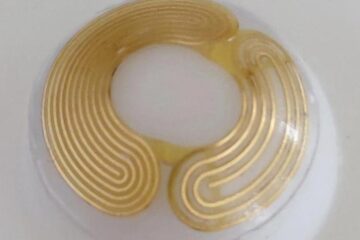A brand new theory of nerve pulses

Recent research results by two physicists from the Niels Bohr Institute at University of Copenhagen, Thomas Heimburg and Andrew D. Jackson, cast doubt on the generally accepted theory of nerve activity. Their new theory of how nerves function emphasizes the essential role that temperature and pressure play in nerves. This result can contribute to a better understanding of the effect of drugs on nerve activity and will be published in the presitigous American journal Proceedings of the National Academy of Sciences.
It is generally accepted in biology that nerve pulses are governed by so-called protein channels that open and close. According to the classic theory, electrical currents passing through open protein channels create the nerve pulses that are the basis of the brain’s activity and of its communication with muscles. This theory stands unchallenged in textbooks and earned the Nobel Prize in 1963 for its inventors, the British scientists Alan L. Hodgkin and Andrew F. Huxley.
According to Heimburg and Jackson, nerve pulses are more appropriately described as localized sound waves called ”solitons”. Perhaps nerves communicate to a larger extent with pulses of sound than with electrical signals. Scientists at the Niels Bohr Institute have been led to this new view of nerve pulses by new experimental results and by the results of a number of classical experiments not addressed by the Hodgkin-Huxley theory.
Media Contact
All latest news from the category: Physics and Astronomy
This area deals with the fundamental laws and building blocks of nature and how they interact, the properties and the behavior of matter, and research into space and time and their structures.
innovations-report provides in-depth reports and articles on subjects such as astrophysics, laser technologies, nuclear, quantum, particle and solid-state physics, nanotechnologies, planetary research and findings (Mars, Venus) and developments related to the Hubble Telescope.
Newest articles

‘Smart’ contact lenses could someday enable wireless glaucoma detection
Most people with early-stage glaucoma don’t know they have it, even though early treatment is key to reducing vision loss. While detecting a subtle increase in eye pressure helps doctors…

New tech may lead to smaller, more powerful wireless devices
Good vibrations… What if your earbuds could do everything your smartphone can do already, except better? What sounds a bit like science fiction may actually not be so far off….

Caution, hot surface!
An international research team from the University of Jena and the Helmholtz Institute Jena are demystifying the mechanisms by which high-intensity laser pulses produce plasma on the surface of solids….





















